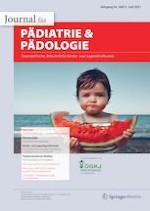Erschienen in:

07.07.2021 | Pädiatrie | Leitthema
Parasitosen im Kindesalter
verfasst von:
Prof. Dr. R. Fölster-Holst
Erschienen in:
Pädiatrie & Pädologie
|
Ausgabe 3/2021
Einloggen, um Zugang zu erhalten
Zusammenfassung
Parasitosen kommen in einer Kindersprechstunde sowohl in Kliniken als auch in Praxen häufig vor. Verantwortlich sind die die menschliche Haut dauerhaft besiedelnden Parasiten wie Sarcoptes scabiei hominis und Pediculus humanus capitis (persistierende Parasitosen) sowie solche, die die Haut nur zur Nahrungsaufnahme attackieren wie Pulex irritans, Cimex lectularius und Neotrombicula autumnalis (transiente Parasitosen). Führendes Symptom der Parasitosen ist der Juckreiz, für den eine allergische Spätreaktion auf Proteine des Speichels der Parasiten verantwortlich ist. Bei einigen Parasitosen wie der Skabies ist der Juckreiz typisch, tritt besonders nachts auf und ist durch den damit verbundenen Schlafmangel mit einer deutlichen Einschränkung der Lebensqualität verbunden, während der Juckreiz bei der Pediculosis capitis häufig fehlt. Im Folgenden werden persistierende und transiente Parasitosen anhand der Anamnese, der Morphologie und der Symptome charakterisiert.